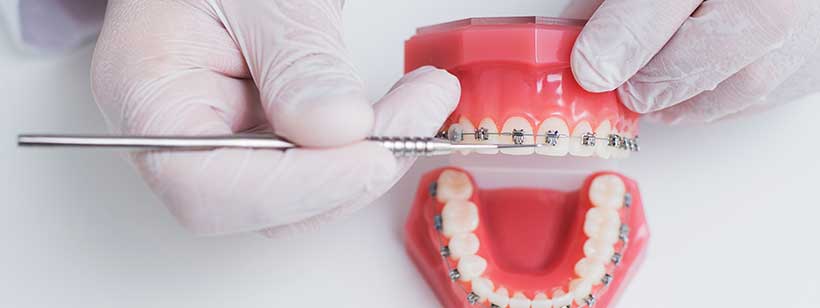
Traditional metal braces remain one of the most popular orthodontic solutions
Thanks to some significant advances in the field of modern orthodontics, there are now a number of effective ways to straighten your teeth.
Traditional metal braces remain an effective solution particularly for severe issues like malocclusion and crowding. Are traditional braces the best option for you? And, how do they really work?
Braces work by applying gentle pressure on your teeth and over time, move them into their desired positions. Your braces are then adjusted periodically to achieve the optimal result.
Today, braces are much less bulky and go virtually unnoticed. Some of our braces are clear, and some have coloured brackets. Elastics come in lots of colours and you can change certain elements with your braces each time you visit us.
How do they work?
Traditional metal braces work by applying constant and gradual pressure to the teeth. The constant pressure that is exerted forces the teeth to shift gradually into new, more desirable positions. This movement of your teeth can go in a number of directions, depending on your needs, and can help to resolve a broad range of issues.
These can include:
- crowding
- unwanted gaps
- malocclusion
- crookedness
- misaligned bites and jaws
Why choose traditional braces?
Some of our patients are often put off braces because of the way that they look and feel. With advances in modern technology braces are much more comfortable than they used to be. Traditional metal braces remain a highly effective treatment and are often recommended in the most complex orthodontic cases.
If you suffer from a severe orthodontic issue, braces are likely to be your best option as they can be used with both extraction and non-extraction orthodontics and can also be combined with more advanced appliances to correct severely misaligned bites and jaws.
Because our braces are completely customised for each patient, your treatment will be suited exactly to your needs. This generally ensures that your treatment plan is as efficient as possible.
Will I need to have teeth removed to have braces?
In some cases, teeth may need to be removed, in order to make enough room to fit crowded teeth into position. Fortunately, modern orthodontics involves a much lower requirement to remove teeth, and, if treated at the correct age, teeth may only need to be removed in 10 to 15 percent of cases.
When should I get braces?
Generally, orthodontic treatment is most effective when the jaw is still developing. Ideally patients should undergo orthodontic treatment as a child but it’s never too late to straighten your teeth. In fact, around one in five orthodontic patients are adults and orthodontic treatments are becoming increasingly popular. While there are a range of orthodontic treatments available, our team will advise you of the best option for your needs, depending on your particular condition and desired outcome.
Interested in straightening your smile? To arrange a consultation, please don’t hesitate to get in touch.
Don’t forget to share this via Twitter, Google+, Pinterest and LinkedIn.
